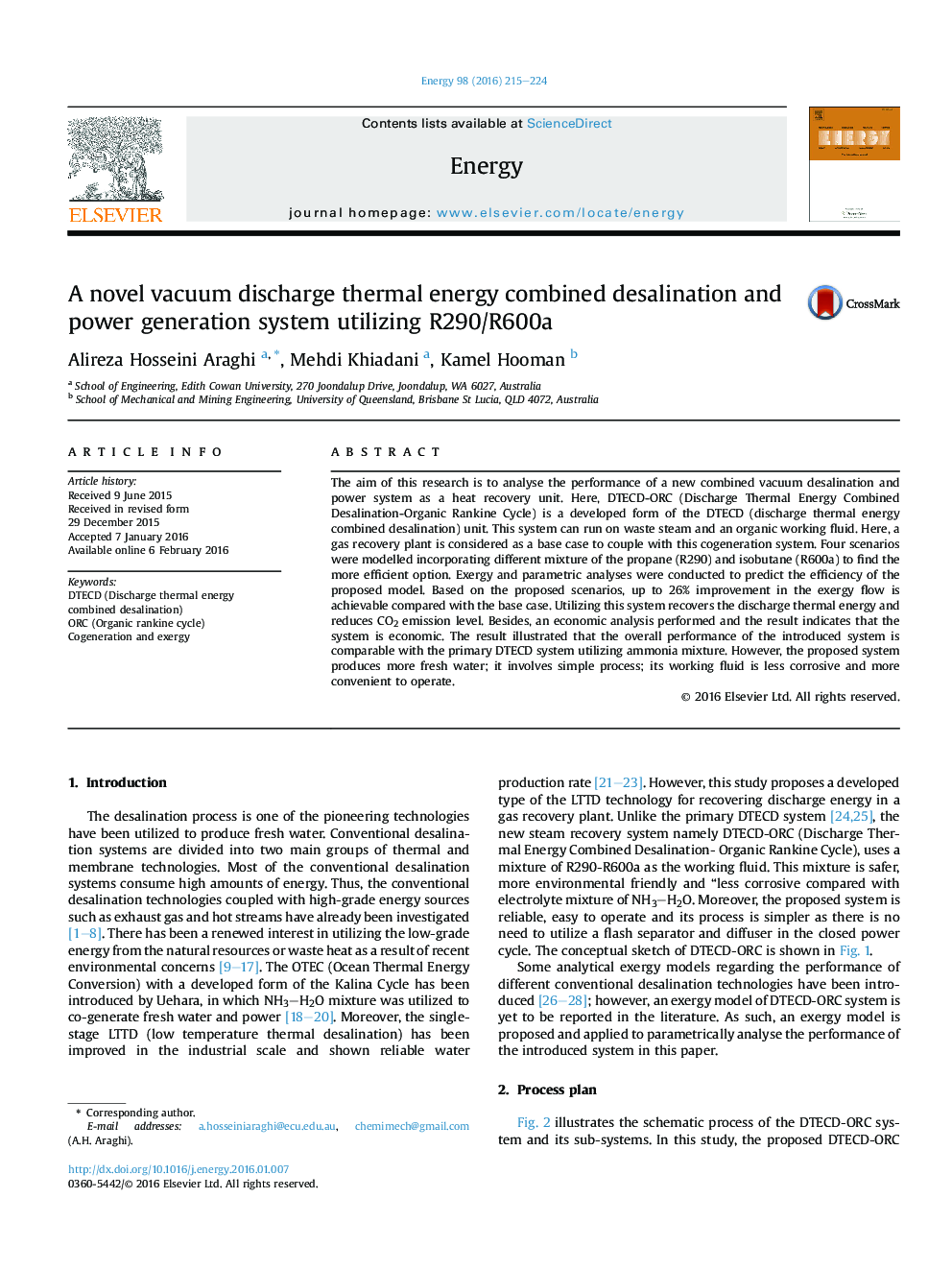| کد مقاله | کد نشریه | سال انتشار | مقاله انگلیسی | نسخه تمام متن |
|---|---|---|---|---|
| 1731372 | 1521450 | 2016 | 10 صفحه PDF | دانلود رایگان |

• The DTECD-ORC is a developed form of the DTECD technology.
• This heat recovery system utilising a mixture of R290-R600a as its working fluid.
• This economic system couples with a gas recovery plant to cogenerate water and power.
• The performance of the proposed system are comparable with the primary DTECD unit.
• It has simple process, higher water production rate and more convenient to operate.
The aim of this research is to analyse the performance of a new combined vacuum desalination and power system as a heat recovery unit. Here, DTECD-ORC (Discharge Thermal Energy Combined Desalination-Organic Rankine Cycle) is a developed form of the DTECD (discharge thermal energy combined desalination) unit. This system can run on waste steam and an organic working fluid. Here, a gas recovery plant is considered as a base case to couple with this cogeneration system. Four scenarios were modelled incorporating different mixture of the propane (R290) and isobutane (R600a) to find the more efficient option. Exergy and parametric analyses were conducted to predict the efficiency of the proposed model. Based on the proposed scenarios, up to 26% improvement in the exergy flow is achievable compared with the base case. Utilizing this system recovers the discharge thermal energy and reduces CO2 emission level. Besides, an economic analysis performed and the result indicates that the system is economic. The result illustrated that the overall performance of the introduced system is comparable with the primary DTECD system utilizing ammonia mixture. However, the proposed system produces more fresh water; it involves simple process; its working fluid is less corrosive and more convenient to operate.
Journal: Energy - Volume 98, 1 March 2016, Pages 215–224